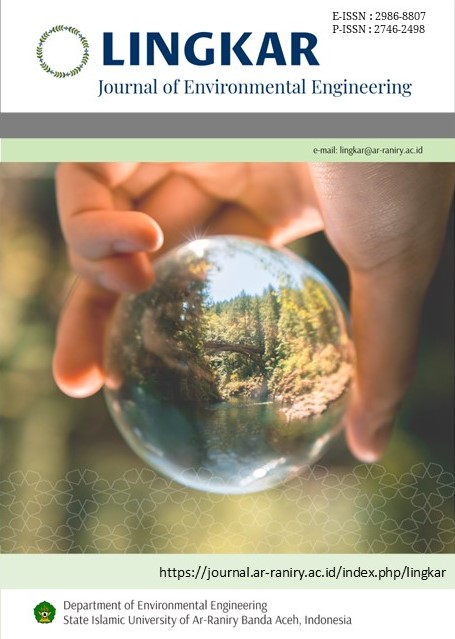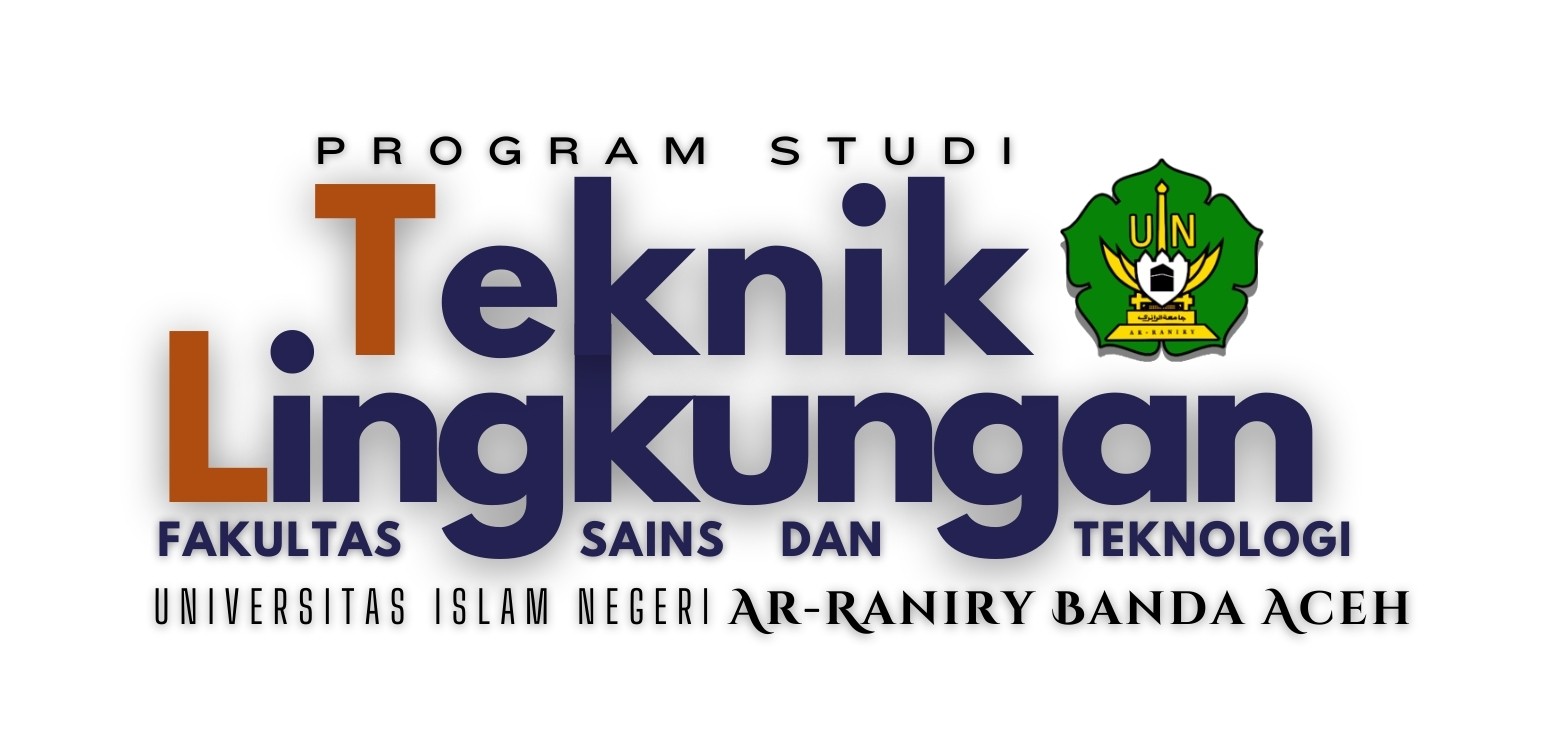UTILIZATION OF LANDFILL LEACHATE AS LIQUID ORGANIC FERTILIZER THROUGH FERMENTATION PROCESS WITH THE ADDITION OF AZOSPIRILLUM SP.
Keywords:
Biofermentation, Azospirillum sp, landfill leachate, liquid organic fertilizerAbstract
This study investigates the utilization of landfill leachate as a raw material for producing liquid organic fertilizer (LOF) through a fermentation process with the addition of Azospirillum sp. The research focuses on evaluating the effects of different dilution levels (20×, 40×, 60×, and 80×) and a 14-day fermentation period under anaerobic conditions on the quality of the resulting fertilizer. The results showed that the 20× dilution produced the most optimal conditions, yielding macronutrient contents (N, P₂O₅, and K₂O) that met the national quality standards for liquid organic fertilizer. Additionally, a decrease in heavy metal concentration, particularly Lead (Pb), was observed during fermentation, indicating improved environmental safety of the final product. Although the C-organic and Fe contents were below the required limits, the neutral pH and absence of microbial contamination confirmed that the fertilizer is environmentally safe for agricultural application. Overall, this study demonstrates that the fermentation of landfill leachate with the addition of Azospirillum sp. provides a sustainable and eco-friendly approach for converting waste into a value-added product that supports environmentally responsible agriculture.
References
Antonia, M, A Mendoza-Herrera, V Bocanegra-García, and G Rivera. 2022. “Azospirillum Spp. from Plant Growth-Promoting Bacteria to Their Use in Bioremediation.” Microorganisms 10 (5): 1–13. doi:10.3390/microorganisms10051057.
Jauhary, A M, S W Auvaria, and S Nengse. 2023. “Redesain Instalasi Pengolahan Air Lindi Di TPA Ngipik, Kecamatan Gresik, Kabupaten Gresik.” Environmental Engineering Journal ITATS 3 (2): 80–94. doi:10.31284/j.envitats.2023.v3i2.3865.
Lesmana, R Y, and N Apriyani. 2020. “Pengaruh Air Lindi Terhadap PH Dan Zat Organik Pada Air Tanah Di Tempat Penampungan Sementara Kelurahan Pahandut Kota Palangkaraya.” Jurnal Manusia Dan Lingkungan 25 (2): 60–68. doi:10.22146/jml.39489.
Nurhasanah, and Hedi. 2021. “Sosialisasi Pengolahan Lindi Menjadi Pupuk Cair Di TPS-3R Kelurahan Talang Kelapa Kecamatan Alang-Alang Lebar Palembang Sumatera Selatan.” Jurnal Widya Laksana 10 (1): 36–42. https://www.researchgate.net/publication/368057569.
Purba, T, H Ningsih, and P Abdus. 2021. Buku Tanah Dan Nutrisi Tanaman.
Rahmi, A. 2019. “Identifikasi Pengaruh Air Lindi (Leachate) Terhadap Kualitas Air Di Sekitar Tempat Pembuangan Akhir (TPA)” 11 (1): 1–6.
Safitri, N D, and W Hadi. 2017. “Pengaruh Pengenceran Lindi Dan Penambahan Bakteri Starter Terhadap Pertumbuhan Tanaman Pangan.” Jurnal Teknik ITS 6 (2). doi:10.12962/j23373539.v6i2.25064.
Sudarmaji, S, and B A Prayogo. 2020. “Hubungan Pencemaran Lindi Tempat Pembuangan Akhir Sampah Benowo Dengan Kadar Merkuri (Hg) Pada Ikan Hasil Tambak Dan Kesehatan Konsumennya.” Jurnal Kesehatan Lingkungan Unair 4 (2): 31–38.
Thomas, D H S. 2019. “Potensi Pencemaran Air Lindi Terhadap Air Tanah Dan Teknik Pengolahan Air Lindi Di TPA Banyuroto Kabupaten Kulon Progo.” Sustainability (Switzerland) 11 (1): 1–14. http://scioteca.caf.com/bitstream/handle/123456789/1091/RED2017-Eng-8ene.pdf.
Walid, A, R G T Kusumah, E P Putra, W Herlina, and P Suciarti. 2020. “Pengaruh Keberadaan TPA Terhadap Kualitas Air Bersih Diwilayah Pemukiman Warga Sekitar: Studi Literatur.” Jurnal Ilmiah Universitas Batanghari Jambi 20 (3): 1075–82. doi:10.33087/jiubj.v20i3.1025.
Downloads
Published
How to Cite
Issue
Section
License
Copyright (c) 2024 Salsabila Puspita Wulandari, Syadzadhiya Qothrunada Zakiyayasin Nisa’

This work is licensed under a Creative Commons Attribution-ShareAlike 4.0 International License.














